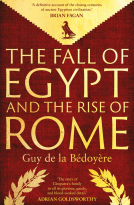
Paul and Time
Life in the Temporality of Christ
by L. Ann Jervis
This title was previously available on NetGalley and is now archived.
Send NetGalley books directly to your Kindle or Kindle app
1
To read on a Kindle or Kindle app, please add kindle@netgalley.com as an approved email address to receive files in your Amazon account. Click here for step-by-step instructions.
2
Also find your Kindle email address within your Amazon account, and enter it here.
Pub Date Nov 21 2023 | Archive Date Dec 05 2023
Baker Academic & Brazos Press | Baker Academic
Talking about this book? Use #PaulandTime #NetGalley. More hashtag tips!
Description
In this groundbreaking book, Ann Jervis instead proposes that Paul thought not in terms of two ages but in terms of life in this age or life in Christ. Humans apart from Christ live in this age, whereas believers live entirely in the temporality of Christ.
Christ's temporality, like God's, is time in which change occurs--at least between Christ and God and creation. Their temporality is tensed, but the tenses are nonsequential. The past is in their present, as is the future. However, this is not a changeless now but a now in which change occurs (though not in the way that human chronological time perceives change). Those joined to Christ live Christ's temporality while also living chronological time.
In clear writing, Jervis engages both philosophical and traditional biblical understandings of time. Her inquiry is motivated and informed by the long-standing recognition of the centrality of union with Christ for Paul. Jervis points out that union with Christ has significant temporal implications.
Living Christ's time transforms believers' suffering, sinning, and physical dying. While in the present evil age these are instruments purposed for destruction, in Christ they are transformed in service of God's life. Living Christ's time also changes the significance of the eschaton. It is less important to those in Christ than it is for creation, for those joined to the One over whom death has no dominion are already released from bondage to corruption.
Scholars and students will profit from this lively contribution to Pauline studies, which offers big-picture proposals based on detailed work with Paul's letters. The book includes a foreword by John Barclay.
Advance Praise
“What is time? Ann Jervis contends that Pauline interpreters of all stripes have ignored this question for far too long. Replacing the usual contrast between ‘this age’ and the ‘age to come’ with ‘death-time’ and ‘life with Christ,’ Jervis provokes reflection not only on Paul’s view of time but on his Christology, soteriology, and ecclesiology. Her startling proposals require and repay careful attention by all serious students of Paul’s letters.”—Beverly Roberts Gaventa, Helen H. P. Manson Professor Emerita of New Testament, Princeton Theological Seminary
“The problem that Ann Jervis tackles in this book is arguably the most difficult one in the letters of Paul, not only on its own internal terms but also in its existential challenge to Christian reception of Paul. Jervis gives us a characteristically learned and incisive treatment of all the relevant texts. What is more, she wrestles profoundly with the greatest theological problem of all: the fact of death.”—Matthew V. Novenson, senior lecturer in New Testament and Christian origins, University of Edinburgh
“This rigorous and challenging book charts a new course in Pauline interpretation, centering our understanding of the time of the gospel on the crucified and living Christ. Through Jervis’s analysis, we learn to ask not only ‘What time is it?’ but crucially ‘Whose time is it?’ Essential reading for all serious students of Paul’s gospel.”—Susan G. Eastman, associate research professor emerita of New Testament, Duke Divinity School
“Jervis’s bold intervention mounts a considered and wide-ranging challenge to commonplace accounts not only of the apostle’s eschatology but also of his Christology and his account of salvation. She invites us to see afresh how, for Paul, the massive gravity of Christ bends everything around it, including time itself. The result is an extraordinary reframing of the Christian life in terms of the fundamental antimony between Christ’s own ‘life-time’ and the time of death. A welcome provocation!”—Philip G. Ziegler, University of Aberdeen
“I loved this book. I was, by turns, fascinated, charmed, and challenged. It engages some of the deepest questions we face in relation to time, God, and our understanding of Paul—questions that lie at the very heart of existence itself and yet that are seldom placed by Paul’s interpreters. It draws throughout on the reflections of some of the finest minds in theology, philosophy, and science, as well as in biblical scholarship. And it engages multiple key Pauline texts with deft, accurate exegesis. But it does so throughout with such elegance and clarity that I was drawn smoothly through its spiraling discussions and arguments to its key insight: the absolute centrality of our existence within the risen Christ and within his life-giving time. An original, powerful, and profound engagement with Paul. In short, a gem.”—Douglas A. Campbell, professor of New Testament, Duke Divinity School
“For a very long time, discourse about time in the Bible has been conditioned by well-worn expressions such as ‘Heilsgeschichte,’ ‘eschatology,’ and ‘apocalyptic.’ In this volume, however, Jervis offers a much-needed and genuinely fresh perspective on Pauline theology, an approach that has potential to reconfigure the way one might consider the New Testament corpus as a whole. Once begun, the book is hard to put down.”—Loren Stuckenbruck, faculty of Protestant Theology, Ludwig-Maximilians-Universität München
“Debates about Paul’s thought, especially whether it was ‘salvation historical’ or ‘apocalyptic,’ often speak at cross-purposes because they leave unexamined Paul’s conception of time. In this provocative book, Ann Jervis shines a light on the temporality of Paul’s conception of union with Christ. She challenges established explanations (especially the overlapping ‘two-age’ hypothesis) and asks penetrating questions about our assumed temporalities and whether Paul shared them. The result is a bold and stimulating thesis with far-reaching implications for many aspects of Pauline theology.”—Jamie Davies, tutor of New Testament, Trinity College, Bristol
“Surprising, even shocking on first read, Jervis’s book forces us to ask if we have read Paul aright at an absolutely central point, and it requires us to seek new patterns of thought in his wake. For that, we should all be heartily grateful.”—John Barclay (from the foreword)
Available Editions
| EDITION | Other Format |
| ISBN | 9781540960788 |
| PRICE | $32.99 (USD) |
| PAGES | 224 |
Available on NetGalley
Featured Reviews
This work opens with a lengthy introduction that gives us a foundation with which to start thinking about time. This is important, because most of us don’t really think too deeply about time … it is simply something that passes in which events happen whereby those events become fixed or permanent. We approach eternity much like to approach infinity in mathematics, by adding more to the dimension we call time (in either direction). Classical though where eternity is outside of temporality and is unchanging and unmoving (Plato). Next up is a survey and comparison of current (and perhaps competing) viewpoints that government interpretation through an historical/salvific or an apocalyptic lens. I found the idea that the apocalyptic interpretation sees the eternal God “invading” history (time) to be an interesting perspective. Chapter three (3) introduces the idea that there is an overlap between the current (and dying) age and the age to come … an idea that I had not previously found in my current studies, but is none the less a good talking point for evaluating how early Christians responded to the fact that believers were dying before the second coming of Christ … and which the author specifically rejects. It is in chapter four (4) that we finally see the paradigm shift that the author wants us to consider, breaking time in the “death-time” and “life-time” with the rest of the book dedicated to explaining what that even means.
The rest of the book is a bit tricky and can be hard to understand, which is why so much effort went into the previous chapters to enable the reader to at least grasp the basics. While I think I understood the concept, I still struggled a little with understanding how this all changed or otherwise impacted how the salvation offered by Christ works … leaving me with an overall feeling that this was more of an academic exercise. It was very interesting, but I will need to think on it a lot more before I have a good handle on it.
The chapters and sections in this work are:
Introduction: Thinking About Time
1. Paul’s Conception of Time in Salvation Historical Perspective
2. Paul’s Conception of Time in Apocalyptic Perspective
3. Time in Christ - Not in the Overlap of Ages
4. Christ Lives Time
5. The Nature of the Exalted Christ’s Time
6. The Future of the Exalted Christ’s Time
7. Union with Christ and Time
8. Life in Christ’s Time: Suffering, Physical Death, and Sin
Conclusion
Bibliography
Name Index
Scripture and Ancient Writings Index
I was given this free advance reader copy (ARC) ebook at my request and have voluntarily left this review.
#PaulAndTime #NetGalley
Some of the most fruitful and profitable studies come from fundamentally re-assessing the assumptions which undergird certain core concepts in the faith.
I am currently in the middle of John Barclay’s Paul and the Gift and am very much appreciating his very deep investigation into how gifts and grace were understood in ancient contexts and in the history of interpretation. It helps to show how people have been talking above and past each other and very much tied into the framework of their place and time.
Not for nothing, then, does Barclay provide a forward for another book doing something similar: L. Ann Jervis’ Paul and Time: Life in the Temporality of Christ.
What Barclay does for gift and grace, Jervis does with time. She explores the two predominant perspectives on how Paul views time: the kind of “now/not yet” paradigm popularized by N.T. Wright and others (and one which I have favored), and the “apocalyptic” time viewpoint also common today.
Jervis does well at attempting to not bring any preconceived notions of how time “must work” for Paul in reading Paul’s works. She explores many of the ways in which Paul talks about who Jesus is and what He did in terms of time and temporality.
She well establishes her conclusions: for Paul, there is “death-time” and “life-time.” “Death-time” involves the ways of this world, the powers and principalities, and its corruption and decay. “Life-time” is what God has and is accomplishing in Jesus. She notes well how there is nothing which Jesus needs to be do in order for death to be defeated; He has already done what was necessary in His life, death, resurrection, and ascension. Thus believers are called to live in “life-time” and share in “life-time.” It is not as if she denies that Jesus will return and we will share in the resurrection of life; if anything, it is in her full affirmation of the resurrection and its power which leads her to conclude we already share in “life-time” and simply await for it to be made good in terms of our bodies.
One could strain to continue to justify a “now” but “not yet” framework, but as Jervis well notes, such gives a bit too much credence to that which Jesus has already overcome and defeated. “Apocalyptic” time is rendered irrelevant, because Jesus has been revealed and is revealed in His Lordship and work among His people. There’s no comfort here for a realized eschatology perspective since there is a robust affirmation of the resurrection of the body.
I definitely appreciated this study and have begun working to incorporate it more effectively into the presentation of the Gospel as it relates to where we find ourselves as believers in this moment. We have passed from death to life, and thus from “death-time” into “life-time”; we should live and act like it!
 Willy M, Reviewer
Willy M, Reviewer
Philosophical problems have plagued Abrahamic religions from the beginning of texts that we can find. Why was this the case, how is Paul different, and why does this matter now? Jervis gives us a great scope and breadth of understanding of Paul's vision. In the essence we may not come to a conclusion, but we gather more understanding of what the issue is.








